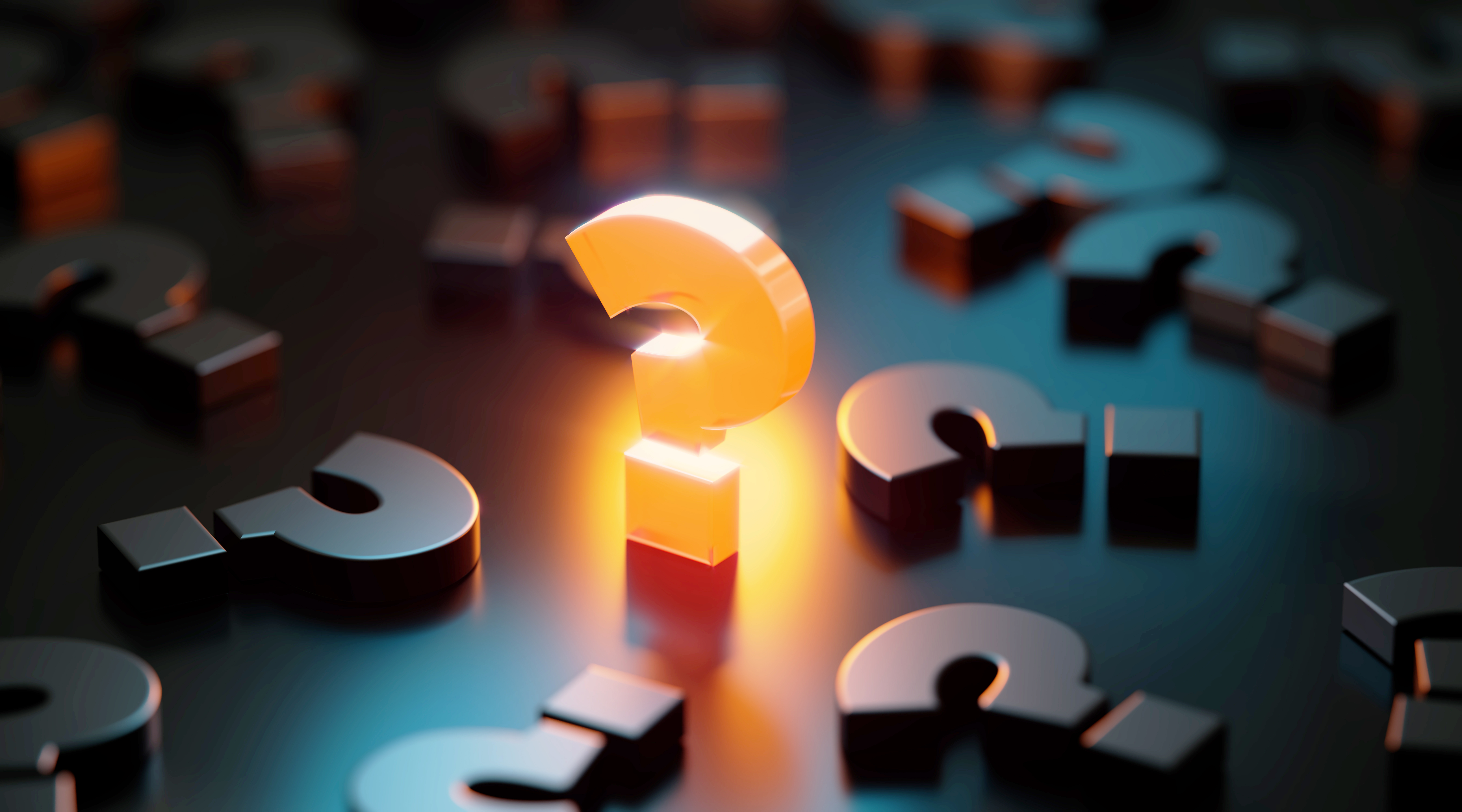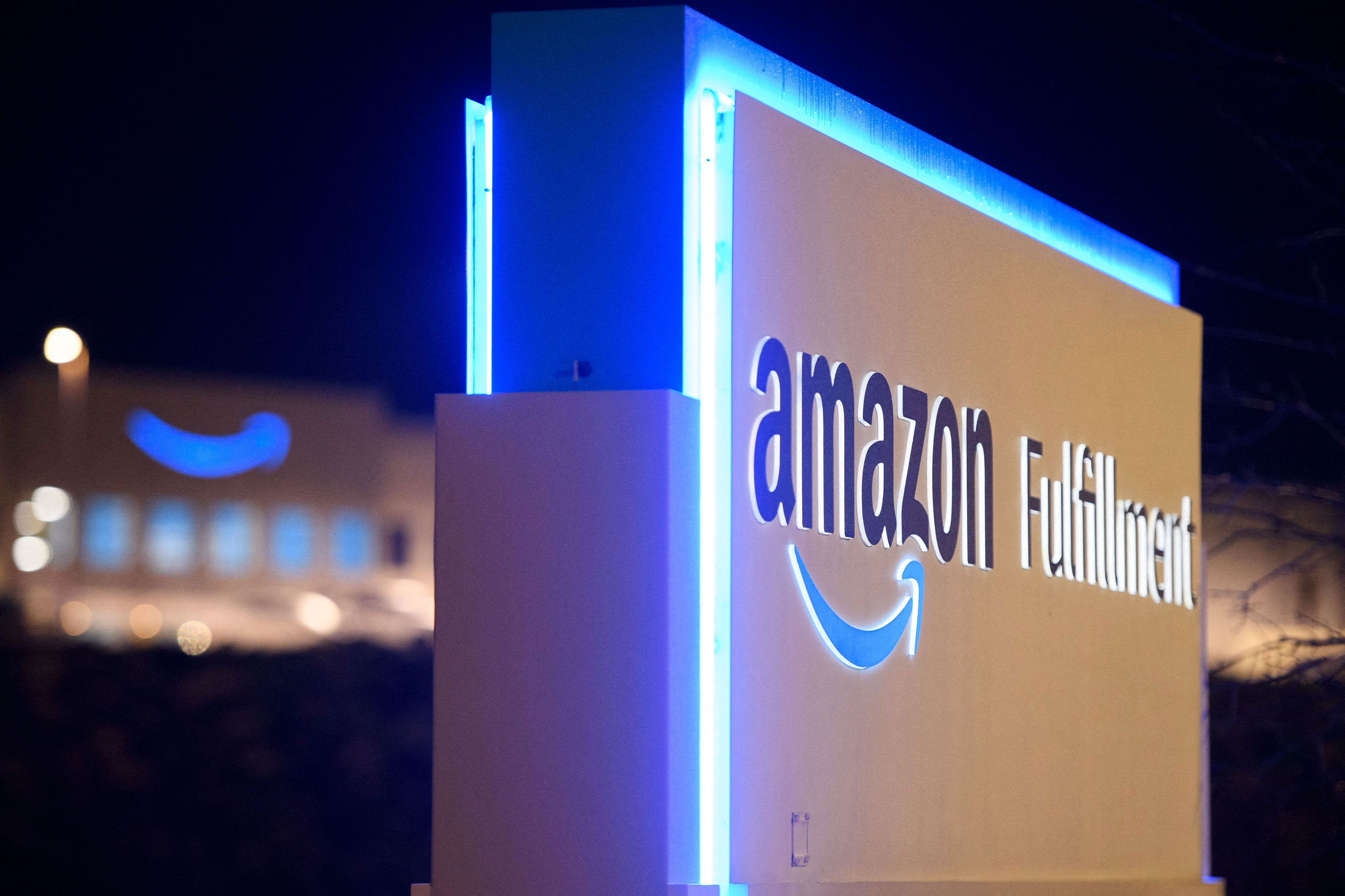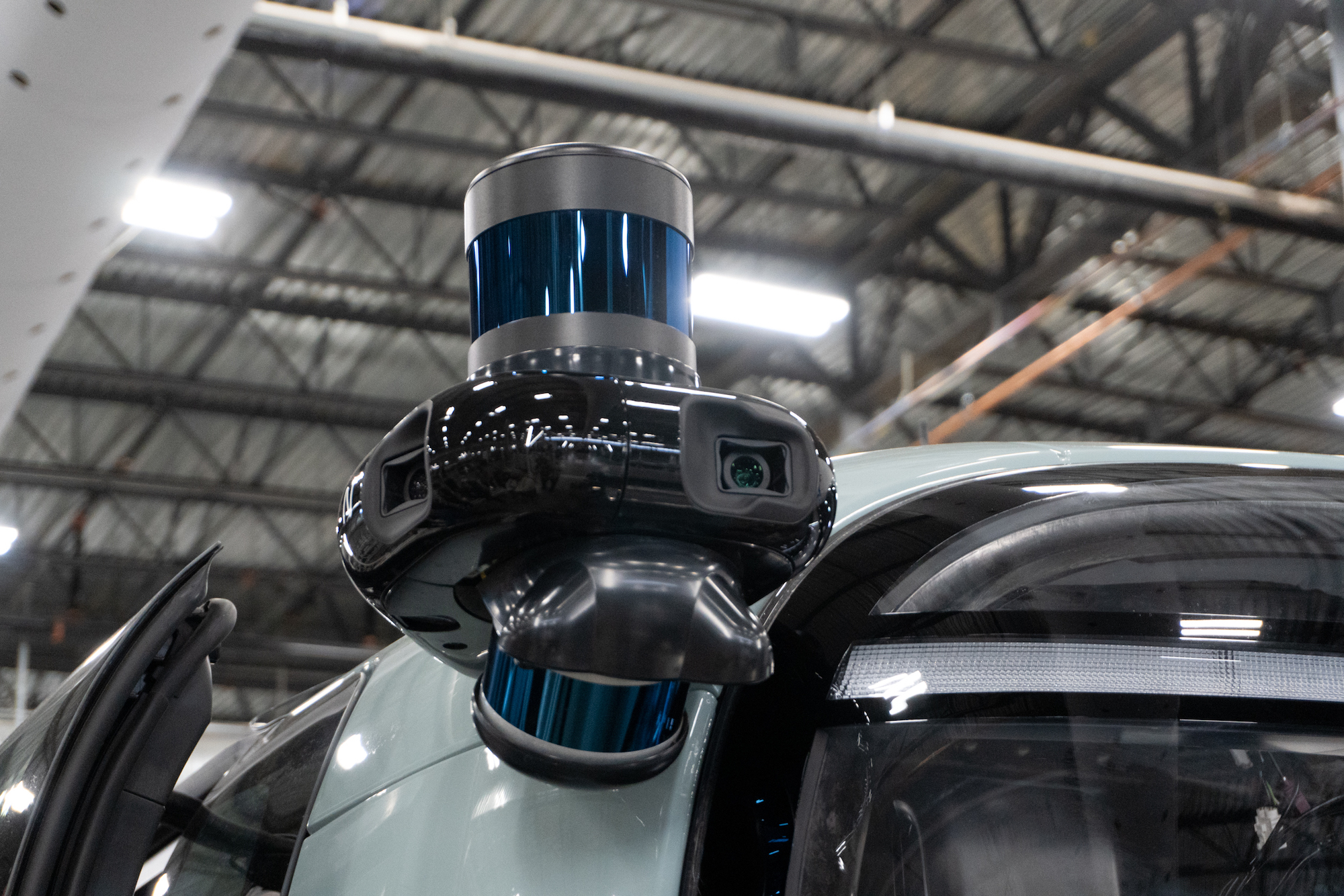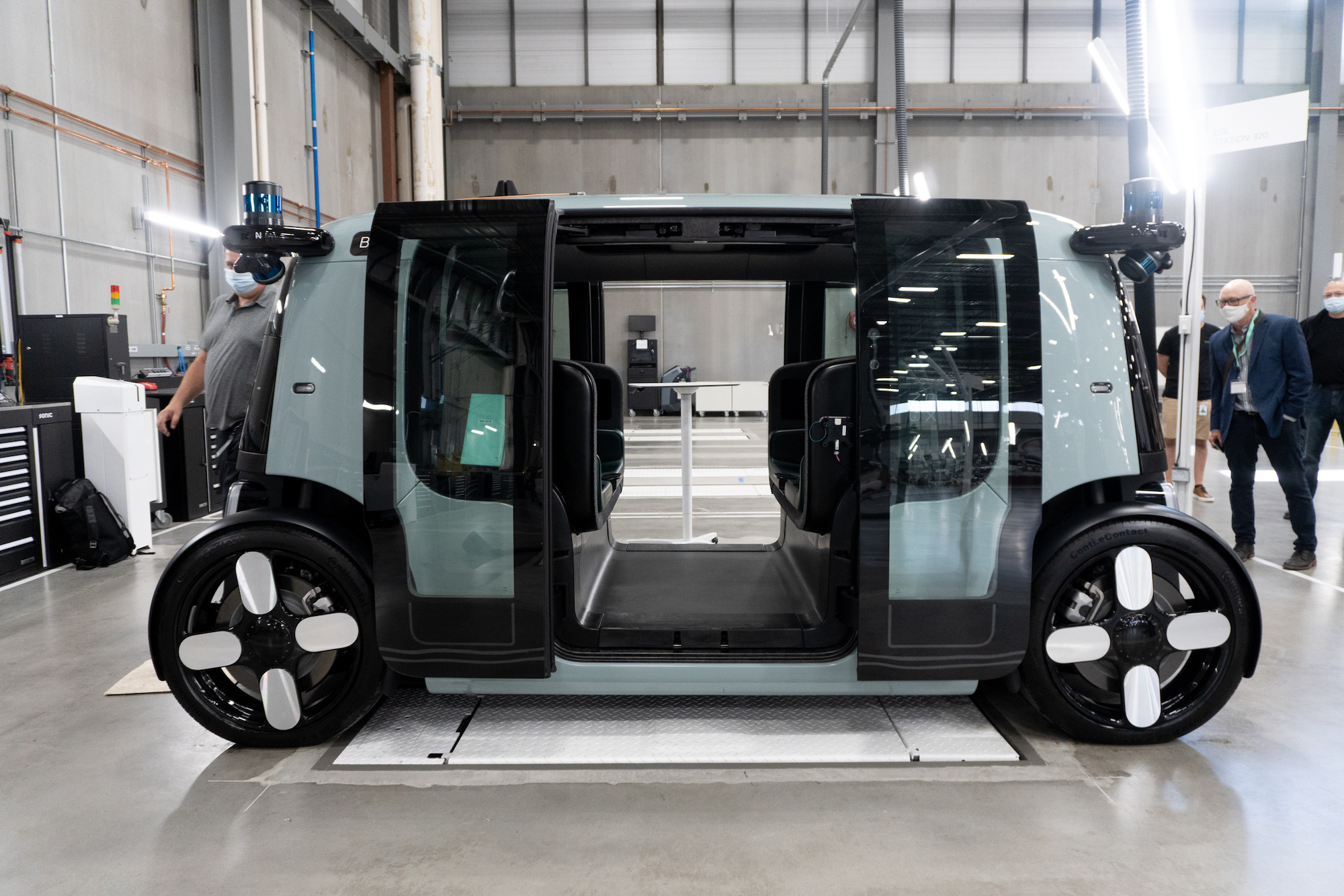Category: TECHNOLOGY
Meta is raising the price of Quest 2 virtual reality headsets by $100
Meta announced today that it’s raising the price of its Quest 2 virtual reality headsets due to increased production costs. Starting on August 1st, the Meta Quest 2 will cost $399.99 USD for the 128GB version, which is a $100 increase from the current $299.99 price tag. The 256GB version will cost $499.99, up from the current $399.99 cost. The company has also warned that it’s increasing the price for Meta Quest 2 accessories and refurbished units.
“People have spent over $1 billion on Meta Quest apps, helping to fuel developers’ businesses as they deliver the games and experiences that make VR great,” the company said in a blog post. “At the same time, the costs to make and ship our products have been on the rise. By adjusting the price of Quest 2, we can continue to grow our investment in groundbreaking research and new product development that pushes the VR industry to new heights.”
In order to continue investing in moving the VR industry forward for the long term, we are adjusting the price of Meta Quest 2 headsets to $399.99 (128GB) and $499.99 (256GB) starting on 8/1/22.
— Meta Quest (@MetaQuestVR) July 26, 2022
Meta is trying to soften the blow of the price hikes by adding an offer to download the popular VR rhythm game Beat Saber for free when you purchase a new headset. The company explains that people who buy a Meta Quest 2 between August 1st and December 31st and activate the device before January 31st of next year using an account that does not already have Beat Saber enabled will be able to download Beat Saber for free for 14 days following activation.
The company says it has an “ambitious” VR hardware roadmap ahead, starting with the launch of its high-end Project Cambria headset, which is rumored to be named the Quest Pro, later this year.
Meta CEO Mark Zuckerberg recently showed off the device’s mixed-reality capabilities in a demo video. The Quest 2 has greyscale passthrough cameras, which help users see their real-world surroundings without removing their headset. But the Quest Pro will have full-color, more realistic passthrough capability, plus depth sensors that help to accurately place digital objects into physical space. If leveraged correctly, the Quest Pro could be poised to produce some pretty sophisticated AR experiences, but Meta won’t be without competition.
A recent report from Bloomberg indicates that the headset will cost more than $1,000. Some leaks have suggested that the headset will retail for around $1,500. By increasing the price of the Quest 2, Meta is likely looking to to narrow the price gap between the Quest 2 and Quest Pro.
The release of the Quest Pro will mark the company’s first new piece of VR hardware since rebranding to Meta last year. Meta says it also plans to ship new generations of the Meta Quest after that.
Daily Crunch: European subscription prices for Amazon Prime will increase in September
Fundraising chats may still start off with small talk, but startup teams are under more pressure than ever to make the best possible use of these rare opportunities.
Blair Silverberg, CEO and co-founder of Hum Capital, says entrepreneurs should resist the urge to become defensive in these sessions.
“In fact, the more a founder can push the questions back to the investor in a way that gives a better understanding of their business and investment strategy, the easier the rest of the conversation will be.”
To get a roundup of TechCrunch’s biggest and most important stories delivered to your inbox every day at 3 p.m. PDT, subscribe here.
What is up, you delightful beings. Today, I’ve been doing a lot of thinking about Instagram. Devin wrote about how the platform just keeps getting worse with dark patterns lifted from TikTok, and Amanda made me laugh with her Instagram responds to criticism with shocking revelation that it will ‘continue to support photos’ headline. The platform’s evolution is a matter close to my heart, and I continue to be torn about influencers and “thought leaders.” In a nutshell: I love Instagram as it is, but I’m also curious where photographers can go and frolic these days. Answers on a postcard.
Oh, and you don’t even need to read the article, but do yourself a favor and look at the pictures in this piece I published this morningBMF’s microscopic 3D printing powers are magnificent, and I’m awestruck by how far 3D printing has come. — Haje
PS: Applications to the Startup Battlefield 200 close this week, so get your applications in pronto!
The TechCrunch Top 3
- Sine Qua Non Prime: European customers have had a pretty sweet deal on Amazon’s Prime subscription. The e-commerce giant just hiked the prices by quite a substantial chunk. French customers are une petite bite angry about their 43% price hike, while German subscribers think their 30% hike is just the wurst, Paul reports.
- A decimation at Shopify: Lots of e-commerce news today, including bad news for a tenth of Shopify’s staff. As pandemic-driven investment in online shopping slows, Shopify lays off about 1,000 employees, Aisha writes.
- After two years at a16z, the first solo albumMary Ann reports that Rex Salisbury came to the conclusion that adding a fund to his lively Cambrian community was a natural next step of the journey. He began the process of raising capital for his own venture firm, Cambrian Ventures, and today announced a $20 million fund focusing on early-stage fintech companies.
Startups and VC
Brian reviewed the third-gen Oura Ring back in December, but today Kyle reports that the existing hardware picked up a new trick along the way and can now measure blood oxygen levels, with more fitness features to come.
Our Found podcast had a particularly interesting episode this week — Nikki Pechet joins as a guest. She started Homebound to make home-building easier and more accessible after a wildfire ripped through Northern California and thousands of people were put on years-long waiting lists to get started building their homes. The episode is called Why this founder feels confident facing the economic downturn. Get that wisdom into your ears as soon as you can. Here’s …read more
India receives $18 billion bids for 5G auction, expects rollout in September
India received bids worth $18 billion on the first day of an auction for the 5G airwaves from tycoons including Mukesh Ambani and Gautam Adani as the race begins for faster data in the world’s second largest internet market.
Telecom Minister Ashwini Vaishnaw told reporters on Tuesday evening that bids went “far beyond our expectations” and “it looks like [the bidding level] will be at the same level” on Wednesday.
India expects the rollout of 5G networks to begin from September, he said. “By the end of the year, residents of several Indian cities will be able to experience 5G,” he said.
He said the government expects to fetch record revenue from the auction — allocation of which the government plans to complete before August 15 — though he stopped short of sharing any figure. The auction and details of the top bidders are expected to become clearer tomorrow, when the auction is expected to reach its completion.
Ambani’s Reliance Jio Infocomm, which counts Google and Meta among its backers, has long expressed enthusiasm about the 5G upgrade. The top Indian telecom operator, which launched five years ago, has said over the years that its infrastructure is 5G-capable already.
Adani’s interest in the 5G bid has been surprising. The Asia’s richest man has increased his fortunes in recent quarters by leveraging its infrastructure empire. Adani Enterprises is India’s biggest coal trader.
The company has however clarified that it is participating in the spectrum auction to provide private network solutions with enhanced cyber security in “in the airport, ports & logistics, power generation, transmission, distribution, and various manufacturing operations.”
Other than Adani and Ambani, Bharti Airtel and Vodafone Idea are also in the race for the bidding, the telecom ministry said Tuesday. Telecoms are eyeing 5G airwaves to boost their own revenues as they anticipate consumption of data to grow.
India is offering to sell 72 gigahertz of airwaves for a 20-year tenure in various frequency bands ranging from 600 megahertz to 26 gigahertz, it has said.
4G is currently the dominant subscription type driving connectivity growth in India, but “5G subscriptions are expected to rapidly increase to reach around 50 million in the region by the end of 2023,” Ericsson said in a report last month.
“5G will represent around 39 percent of mobile subscriptions in the region at the end of 2027, with about 500 million subscriptions. As subscribers migrate to 5G, 4G subscriptions are forecast to decline annually to an estimated 700 million subscriptions in 2027.”
3 indicators to watch for on Ford Q2 earnings day
While much of the automotive industry has suffered a downturn due to a lack of supply to meet pent-up demand, Ford has bucked the trend. At least, in terms of sales goals so far this year.
Industry wide, new vehicle sales in the U.S. dropped 20.3% for the second quarter, to 3.53 million, compared with the same period a year ago due to supply chain constraints that caused production bottlenecks. Ford was one of the few automakers to report a gain, with sales up 1.8% to 480,558 units. However, the growth was due to the strength of Ford’s trucks. Its new car sales fell 36%.
Now, with GM’s earnings report in the rearview, all eyes are on Ford’s second-quarter results to determine where the U.S. automaker stacks up and where it’s headed.
A slew of announcements in past six months provides some hints. Ford ticked numerous tasks off of its compete-on-the-global-EV stage to-do list. The automaker has taken steps to boost battery capacity and shore up its supply chain, announced plans to use lithium iron phosphate batteries for some of its vehicles and ramp up production of its new F-150 Lightning truck.
What analysts and TechCrunch will be watching out for
Per data from Yahoo Finance, analysts expect that Ford generated Q2 2022 earnings of 45 cents per share off revenues of $34.3 billion. That’s a significant jump compared with the $26.8 billion in revenue and 13 cents per share Ford reported the same quarter a year ago, suggesting that the company is beginning to reap results from its $50 billion bet on EVs through mid-decade.
New models
Rivals from GM to Hyundai have unveiled new battery-electric models in recent weeks, but Ford has remained relatively mum on future offerings. Instead, it has been focused on ramping up capacity of its F-150 Lightning pickup, Mustang Mach-E SUV, and E-Transit commercial van.
We’ll be listening Wednesday for any guidance on the automaker’s plans for its future lineup. That includes a second electric pickup Ford CEO Jim Farley teased in April at the production launch of the F-150 Lightning.
Production
Ford and South Korea’s SK recently closed a deal to create an $11.4 billion joint venture to build and operate the Blue Oval City complex in Stanton, Tennessee, and two EV battery plants in Glendale, Kentucky. The Stanton site will build Ford’s battery-electric F-150 Lightning pickup, as well as the second, smaller pickup has Farley referenced.
The automaker reports strong demand for the Lightening. We’ll be looking for an update just how well those deliveries are going as well as more information on Ford’s plans to ramp up capacity.
Raw materials
Like General Motors and other automakers, Ford is securing contracts with suppliers of the raw materials needed to make lithium-ion batteries. The company said it has sourced 70% of battery capacity to meet its 2026 global sales target of 2 million units.
Ford said that incorporating lithium-ion phosphate (LFP) batteries into its portfolio will help trim its materials cost by 10% to 15%. Unlike the prevailing nickel cobalt manganese (NCM) …read more
https://techcrunch.com/2022/07/26/3-indicators-to-watch-for-on-ford-q2-earnings-day/
The third-gen Oura Ring can now measure the oxygen levels in your blood
Oura, the company behind the Oura Ring lineup of wearable devices, today announced that blood oxygen sensing is rolling out to the third-generation Oura Ring. It’s a long time coming — Oura previewed the feature last fall. But Oura, asserting that the wait was worth it, says oxygen sensing will be able to deliver a “more comprehensive assessment of sleep health and physiology” to owners of its newest flagship product.
The third-generation Oura Ring measures blood oxygen, or SpO2, via red and infrared LED sensors that shine light into a wearer’s finger and use the reflections that bounce back to estimate how much oxygen is in the blood. Richly oxygenated blood reflects more red light than infrared light, while poorly oxygenated blood tends to reflect more infrared light than red light.
The technique is called pulse oximetry, and it’s long been a fixture of wearable devices from Fitbit, Garmin, Apple, Withings and others. Some studies have shown that pulse oximetry is relatively accurate. But experts caution that it’s not clinical grade. (In a blog post detailing the new SpO2 feature, Oura is quick to note that the metrics provided by the Oura Ring aren’t meant to diagnose conditions.)
Oura is layering two metrics on top of the Oura Ring’s blood oxygen measurements: Average blood oxygen and breathing regularity. Average blood oxygen estimates the percentage of oxygen in the blood, while breathing regularity attempts to detect “unusual” breathing patterns — i.e., drops in blood oxygen levels — throughout the night or any nap longer than three hours.
Average blood oxygen and breathing regularity measurements are turned on by default. They can be switched off from the Blood Oxygen Sensing settings in the main menu of the Oura app; Oura notes that the third-gen Oura Ring’s battery life “may be a bit shorter than usual” when the measurements are active.
The arrival of blood oxygen sensing follows a series of ups and downs for the Oura Ring. When the smart ring debuted last fall, Oura revealed that unlocking certain features would require subscribing to a $6-per-month plan. Few of these features were available at launch, frustrating customers — Oura previewed updated sleep-tracking algorithms and heart rate tracking for workouts, but delayed the release.
Despite internal instability (the CEO resigned in December), Oura’s been making an effort to right the ship. Late last year, the company announced that it would defer the aforementioned subscription fee for six months. And the improved heart rate tracking landed in May, with the upgraded sleep-tracking algorithms slated to come this fall. That’s hopefully some consolation to the early adopters.
JusTalk spilled millions of user messages and locations for months
Popular messaging app JusTalk left a huge database of unencrypted private messages publicly exposed to the internet without a password for months.
The messaging app has around 20 million international users, while Google Play lists JusTalk Kids, billed as a child-friendly version of its messaging app, has racked up over 1 million Android downloads.
JusTalk says both its messaging apps are end-to-end encrypted and boasts on its website that “only you and the person you communicate with can see, read or listen to them: Even the JusTalk team won’t access your data!”
But that isn’t true. A logging database used by the company for keeping track of bugs and errors with the apps was left on the internet without a password, according to security researcher Anurag Sen, who found the exposed database and asked TechCrunch for help in reporting the lapse to the company.
The database and the hundreds of gigabytes of data inside — hosted on a Huawei-hosted cloud server in China — could be accessed from the web browser just by knowing its IP address. Shodan, a search engine for exposed devices and databases, shows the server was continually storing the most recent month’s worth of logs since at least early January when the database was first exposed.
A short time after we reported that the app was not end-to-end encrypted as the company claims, the database was shut down.
Juphoon, the China-based cloud company behind the messaging app, says on its website that it spun out JusTalk in 2016 and is now owned and operated by Ningbo Jus, a company that appears to share the same office as listed on Juphoon’s website.
Leo Lv, Juphoon’s chief executive and JusTalk’s founder, opened our emails but did not respond, or say if the company planned on notifying users about the security lapse.
Because the server’s data was entangled with logs and other computer-readable data, it’s not known exactly how many people had their private messages exposed by the security lapse.
The server was collecting and storing more than 10 million individual logs each day, including millions of messages sent over the app, including the phone numbers of the sender, the recipient and the message itself. The database also logged all placed calls, which included the caller’s and recipient’s phone numbers in each record.
Because each message recorded in the database contained every phone number in the same chat, it was possible to follow entire conversations, including from children who were using the JusTalk Kids app to chat with their parents. One conversation chain contained enough personal information to identify a pastor who was using the app to solicit a sex worker who lists their phone number publicly for their services, including the time, location and the price of their meeting.
None of the messages were encrypted, despite JusTalk’s claims.
We also previously reported that the database also included granular location data of thousands of users collected from users’ phones, with large clusters of users …read more
Tesla, SpaceX alums stalk energy sector’s white whale with $2 million seed round
Hydrogen has been the decarbonized energy sector’s white whale.
Wildly abundant and highly versatile, it has long had the potential to decarbonize entire sectors of the economy. From cars and trucks to planes, trains and even household boilers, the universe’s lightest gas isn’t short on possible applications.
But it is short on successful applications. Cars and trucks? Until yesterday, the last time I saw a hydrogen car was when I tested a Mercedes fuel cell B-Class … nearly 15 years ago. Planes? Not anytime soon. And homes? Japan is testing the idea, but given the difficulty of retrofitting the natural gas infrastructure to accommodate the leaky molecules, it’s unlikely to happen in the near future.
One place where hydrogen does show promise is in heavy industry, where intense heat and dense power can be hard to replicate with electric sources. Cost remains a hurdle, though.
That’s where Hgen hopes its modular electrolyzers will make an impact. The startup aims to decarbonize hard-to-crack industries like steel and ammonia production by focusing on green hydrogen that’s made using renewable power. It was founded by Molly Yang, a Tesla alum who helped lead the Supercharger, residential energy and industrial energy teams, and Colin Ho, who led actuation and power systems for Starship at SpaceX.
The company exclusively told TechCrunch that it has raised a $2 million seed round led by Founders Fund, which was joined by Fontinalis Partners, Climate Capital, Yishan Wong and a handful of other angels.
Yang said Hgen is bringing to hydrogen production Tesla’s and SpaceX’s focus on optimizing the whole widget.
TechCrunch+ roundup: Bridge round scarcity, resilient e-commerce, CVC negotiating tips
Last week, the world’s largest retailer announced its plans to wade deeper into the healthcare sector with its purchase of concierge provider One Medical.
Three members of the TC+ team shared their thoughts about the deal’s potential impacts on patients and Amazon’s operations:
- Walter Thompson: Amazon is the black hole created by the death of Main Street retail
- Miranda Halpern: Following a logical progression
- Alex Wilhelm: What happened to the value of focus?
Inflation is up and consumer confidence is down, which is why e-commerce startups that hope to weather the ongoing downturn should expand their product offerings.
Does that sound counterintuitive?
“The more complementary and additive a product is to your catalog, the larger your cart size and the more likely a customer is to return,” says Bennett Carroccio. Prior to co-founding Canal, he worked with hundreds of companies as a consumer investment partner at Andreessen Horowitz.
Full TechCrunch+ articles are only available to members.
Use discount code TCPLUSROUNDUP to save 20% off a one- or two-year subscription.
In a post for TechCrunch+, he identifies two cost centers that are the easiest to control (user acquisition and product R&D) and shares three tactics for “staving off the brand-pocalypse.”
Dialing up your marketing budget during a downturn is the wrong call, since “margins are everything” and consumers are more skeptical than ever.
Instead, look for ways to increase LTV with a larger catalog and use third–party suppliers to reduce the cost of goods sold.
Landing a new customer is several times more expensive than retaining an existing one, “and that multiple is likely growing as acquisition costs rise,” Carroccio says.
Thanks for reading!
Walter Thompson
Editorial Manager, TechCrunch+
@yourprotagonist
3 views on Amazon’s $3.9B acquisition of One Medical
Image Credits: PATRICK T. FALLON/AFP / Getty Images
Last week, the world’s largest retailer announced its plans to wade deeper into the healthcare sector with its purchase of concierge provider One Medical.
Three members of the TC+ team shared their thoughts about the deal’s potential impacts on patients and Amazon’s operations:
- Walter Thompson: Amazon is the black hole created by the death of Main Street retail
- Miranda Halpern: Following a logical progression
- Alex Wilhelm: What happened to the value of focus?
Every startup wants an extension round, but there aren’t enough to go around

Image Credits: Getty Images
“Titanic” came out in 1997, but people still argue about whether there was enough room for Rose and Jack on the floating door she used to stay alive.
That makeshift raft had enough room for both lovers — the issue was buoyancy: With two people aboard, neither one would have been protected from the icy water.
Investors can afford to offer bridge rounds to founders who are struggling to keep their heads above water, but metaphorically, everyone would still get wet, reports Rebecca Szkutak.
“I think the roadblock with these bridge financing investors is you have to prove you are really building the bridge,” said one founder who closed a round recently.
Looking for an investment from a CVC? Take these 3 tips to the negotiation table
Faraday Future Delays First EV Model, Says It Needs More Cash
The Los Angeles-based firm is the latest EV startup to struggle with getting its first autos to market, after raising money from investors in public debuts. …read more
Zoox robotaxi with supercar DNA rolls toward SF, Vegas, Seattle streets
The Zoox robotaxi has more in common with a supercar than you think. Look past the Zoox’s breadbox-shaped exterior and inside is the same carbon fiber cabin that can be found in a McLaren.
“Yes, we know that supplier very well,” Andy Piper, Zoox’s VP of vehicle development, told TechCrunch, when it’s pointed out that the Zoox robotaxi’s carbon fiber cab is similar to what supercar automaker McLaren uses in its F1 and production vehicles.
The super strong, yet lightweight material protects occupants during collisions either on the race track or in the regular world and Zoox has added it to its autonomous cube. It’s part of a series of safety features the Amazon-acquired startup has implemented in its prototype vehicles as it prepares to test its robotaxis in San Francisco, California, Seattle, Washington and Las Vegas, Nevada with the eventual goal of launching a commercial service.
Modular design
Image Credits: Roberto Baldwin
Either on its own or with a little nudge from network-connected monitors, it’s the sensors that make sure the vehicle can see the world. The Zoox systems offers up a 360-degree view of the world. Prominently placed on the four corners of the vehicle’s roof are lidar, radar and cameras.
While not aesthetically pleasing, this sticking-out-from-the-main-body-like-antennas setup does more than help see what’s around, it’s also built in a way so that it can be replaced without too much disruption to the vehicle. As the company advances its sensor array, it can easily update the hardware on the vehicles already deployed.
This modular thinking also applies to the driver units situated on either side of the vehicle. The entire apparatus includes the wheels, battery pack and motor. The rig is slid into the vehicle and bolted on. The thinking is that if any of those items require service, the drive unit in need of maintenance can be removed and service performed. Meanwhile, another drive unit can take its place and the vehicle itself can be back on the road with minimal disruption.
Each of these units contains a battery pack with 66.5 kWh of capacity bringing the total battery capacity of the vehicle to 133 kWh. Zoox wouldn’t share projected range numbers but did say that the goal is to keep the vehicle in service for at least 16 hours.
The vehicles themselves are based on a 400-volt system and support DC fast charging up to 100 kW. Considering the battery size and that its usual route will be in dense urban traffic, staying on the road for the full 16 hours should be achievable while the charge rate will be more than adequate for overnight refilling of the batteries.
Redundant technology
In order to navigate cities, in addition to the usual sensor suite, Zoox will create constantly updated high-definition …read more



